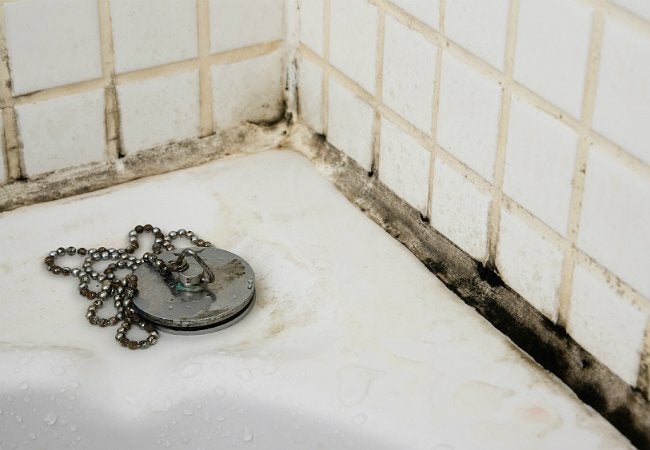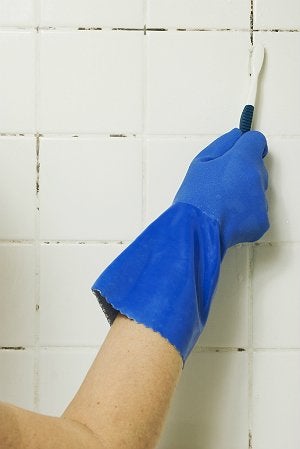How to Get Rid of Stubborn Mildew in the Shower
- Bathroom
Solved! What To Do About Black Mold in the Bathroom
Discolorations in your bathroom's tile and grout aren't just unsightly—sometimes they're downright dangerous. Once you determine which type of mold you're dealing with, you can wipe it out with the appropriate plan of attack.

Photo: istockphoto.com
Q: I just went to clean our rental property after the tenant moved out, and I found black mold in the bathroom. Yuck! How do I get rid of it?
A: Yuck, is right! Black mold is gross. And depending on which variety it is, it could be dangerous. If the space has been flooded or a long-term leak only recently revealed itself, what you see might be the black mold: Stachybotrys chartarum. This highly toxic mold should only be removed by a professional.
But, more than likely, an accumulation of grossness along your bathtub or shower tile indicates the presence of a more generic bathroom mold. The only way to tell for sure is to test it—either by asking professionals to collect samples or sending some away via a do-it-yourself kit—and wait for results. Once you can confirm that it's the latter, garden-variety bathroom mold type, you can get to work ridding it yourself.
In general, mold is a fungus that's plentiful in the natural environment and, when conditions are right, indoors as well. Take the bathroom: Its damp, dark, and often warm interior makes mold growth a perennial problem there. Without adequate ventilation or routine towel-drying after each use, black mold can easily take up residence and thrive. Here's how you can give it an eviction notice.

Photo: istockphoto.com
1. Remove the mold.
Use an antifungal surface cleaner (such as Clorox Antifungal, available on Amazon) and a sponge or cloth to wipe mold off of non-porous surfaces like tile and porcelain. Follow up with a scrub brush on any stubborn areas, and thoroughly rinse with water. This process should remove the mold, even if some dark coloring remains.
2. Clean up the stains.
To remove the black stains that mold leaves on non-porous surfaces like grout, mix equal parts of bleach and water in a spray bottle and spray it over the stained area, allowing it to sit for several minutes. Return and spray the area again, and use a scrub brush to scrub out any remaining discoloration. Tip: An old toothbrush aptly reaches rout's narrow lines.
3. Eliminate mold spores.
While bleach is superb at removing dark stains caused by mold, it's not the most effective way to eliminate mold spores. Instead, spray vinegar onto the area and allow it to dry so that the cleanser can finish off any remaining mold spores.
4. Prevent future mold growth.
- Keep vinegar on hand. Store a spray bottle of vinegar in the bathroom, and apply and air-dry after every shower or soak. (You might consider add several drops of your favorite essential oil—tea tree, peppermint, or lavender—to the bottle to make the vinegar's smell less offensive.)
- Reduce the humidity. If you don't have one, install an exhaust fan. Running one every time you shower or bathe and several minutes following should remove any residual steam and dry the air out.
- Wipe dry after every use. Squeegee and then towel down glass doors and tile to remove extra moisture from those surfaces. While you're at it, wipe out sinks after each use, too, so that mold and mildew have nowhere to go (and grow).
- Clean regularly. Be sure to do a thorough cleaning of the bathroom weekly; if all else fails, this consistent regimen should keep mold spores from taking hold and running amok. Rotate an anti-fungal cleaner into the routine at least once a month.
Some jobs are better left to the pros
Get free, no-commitment estimates from mold removal experts near you.

![]()
How to Get Rid of Stubborn Mildew in the Shower
Source: https://www.bobvila.com/articles/black-mold-in-bathroom/